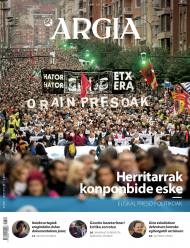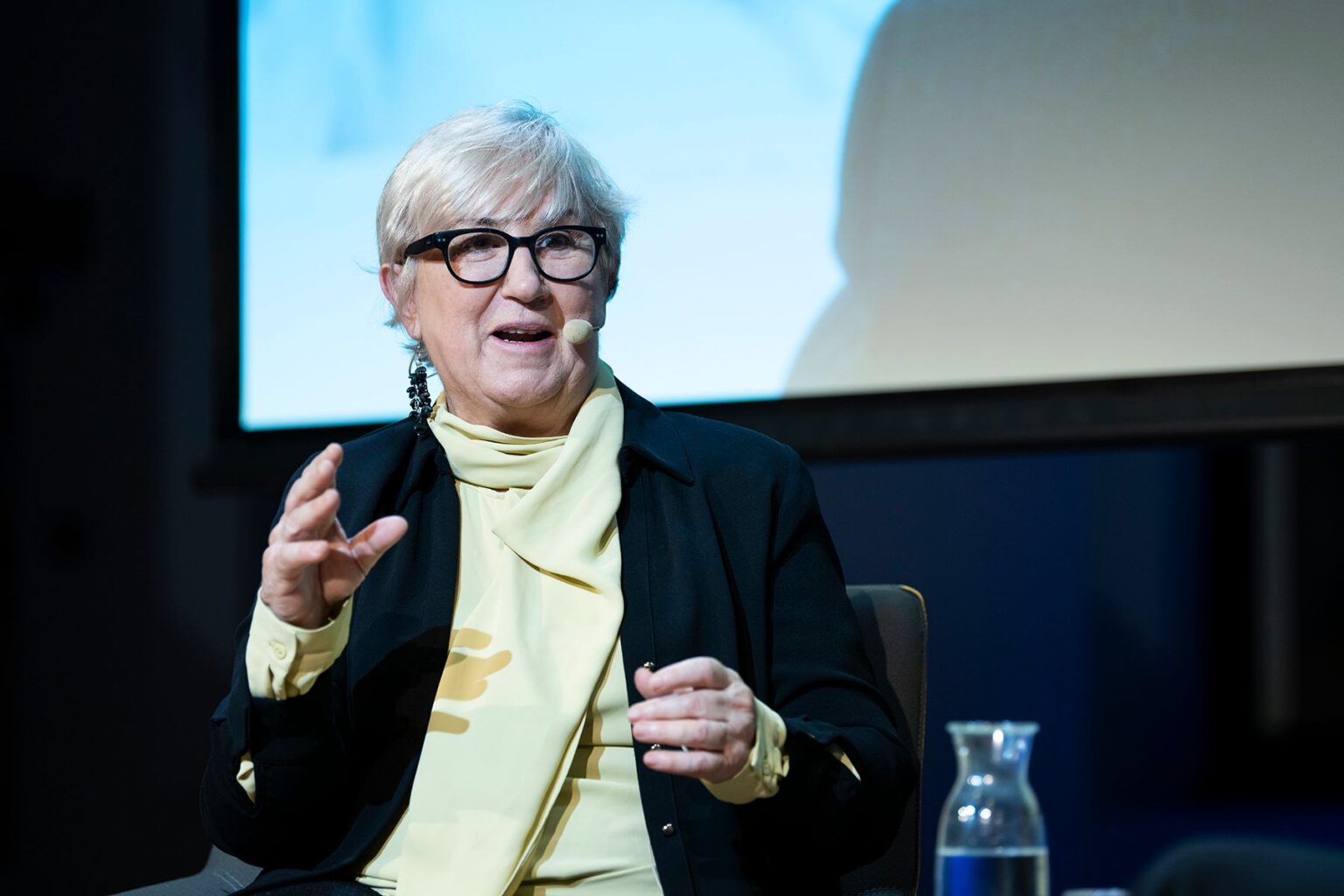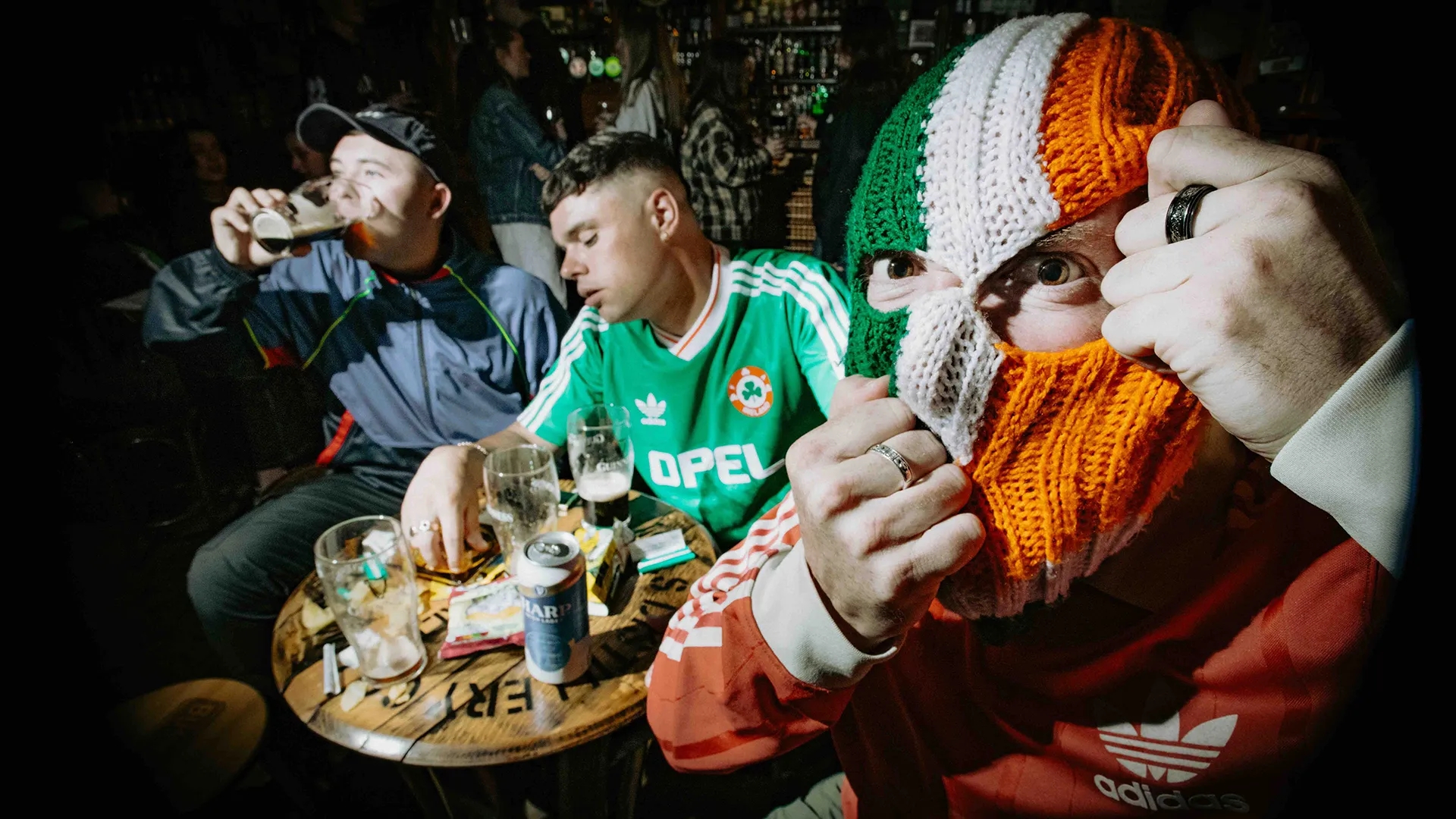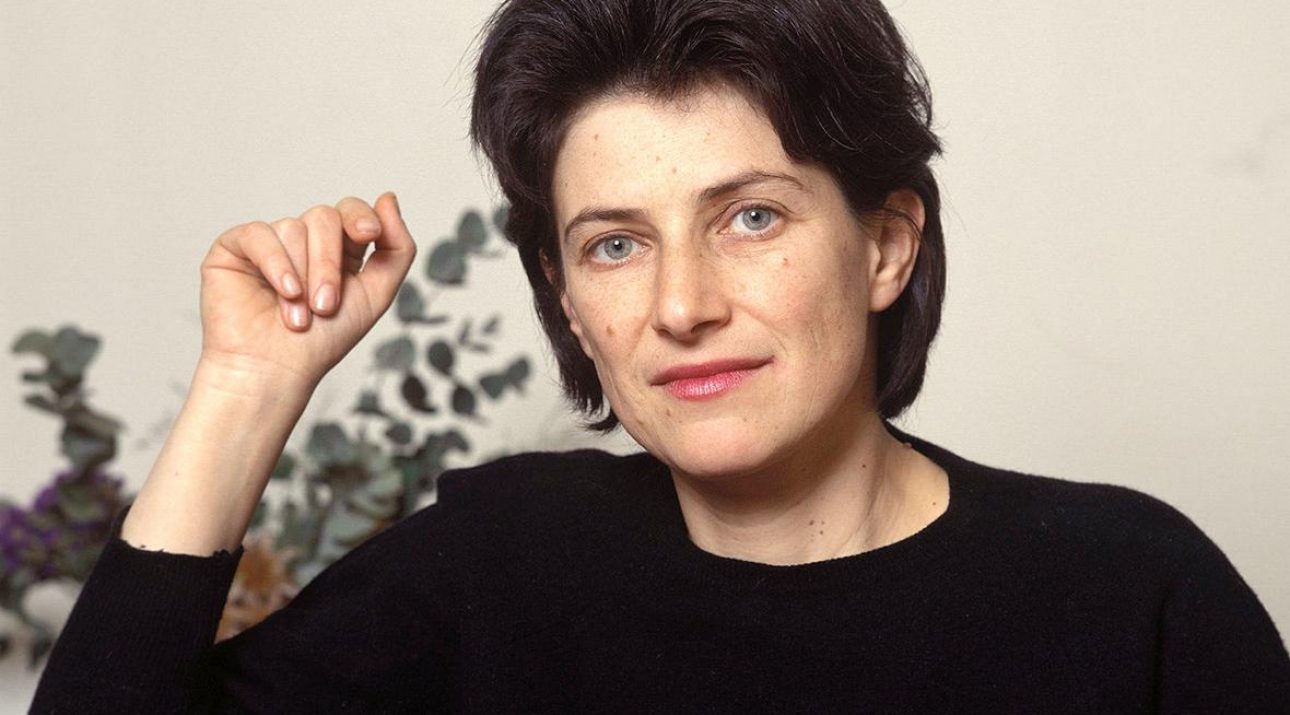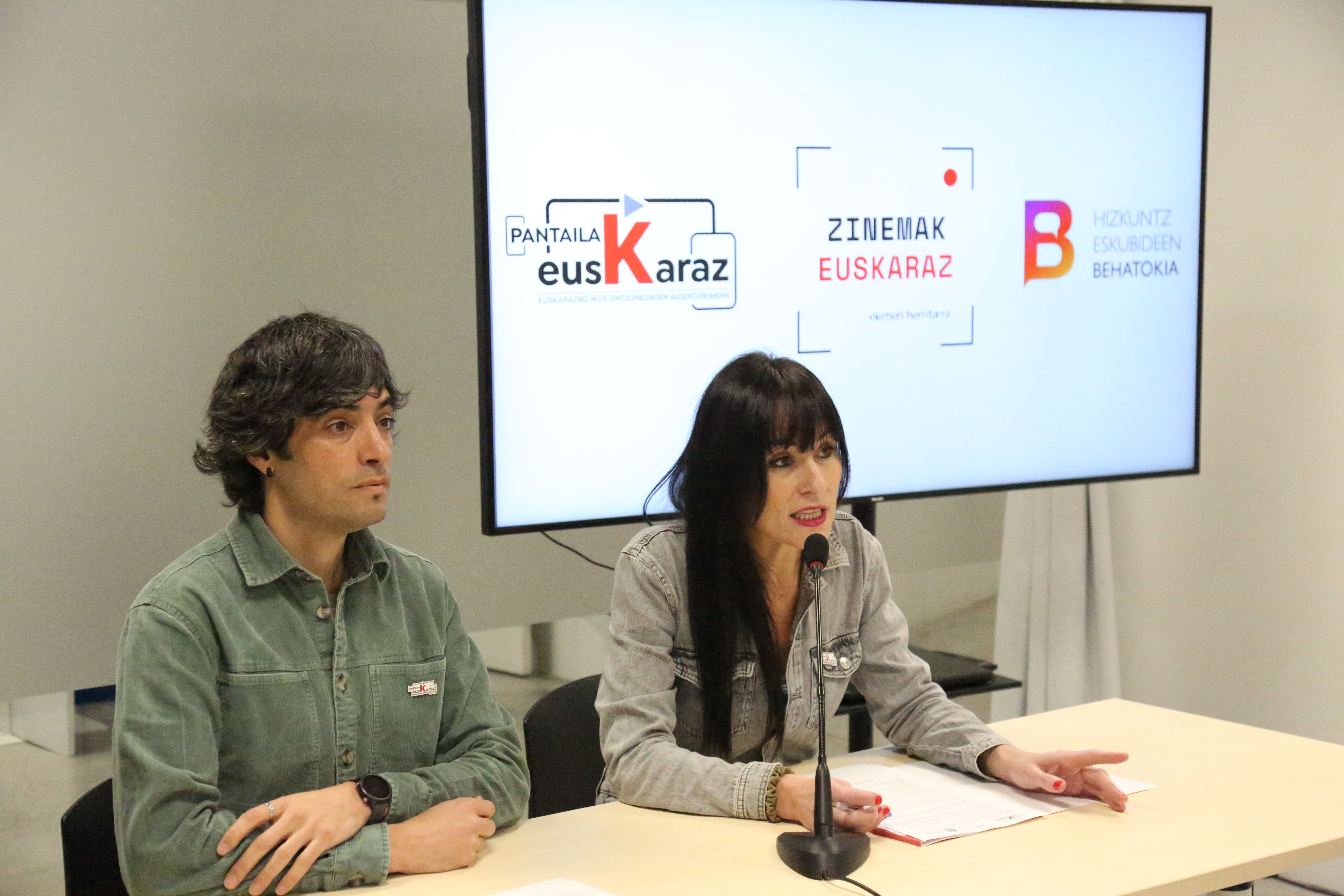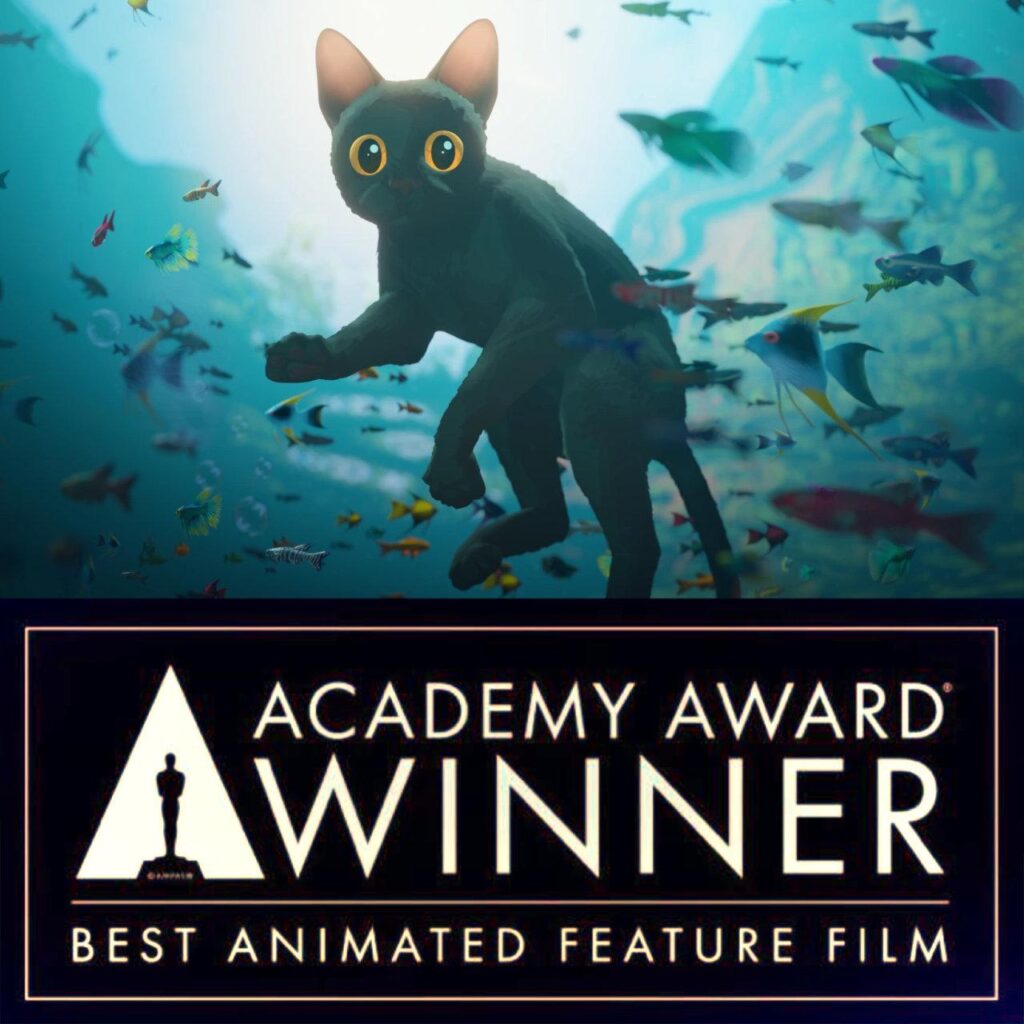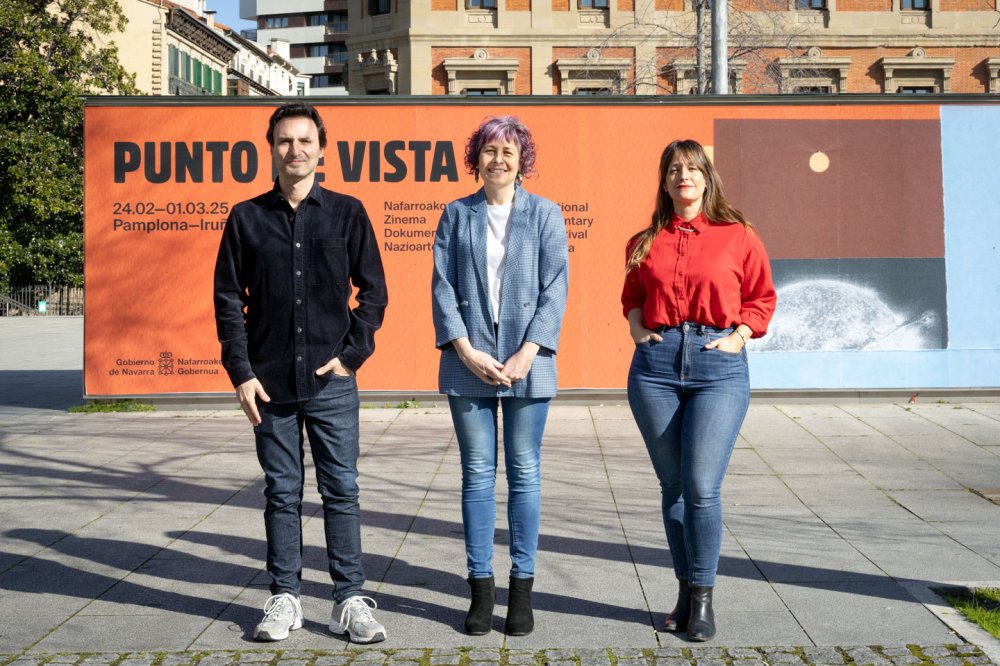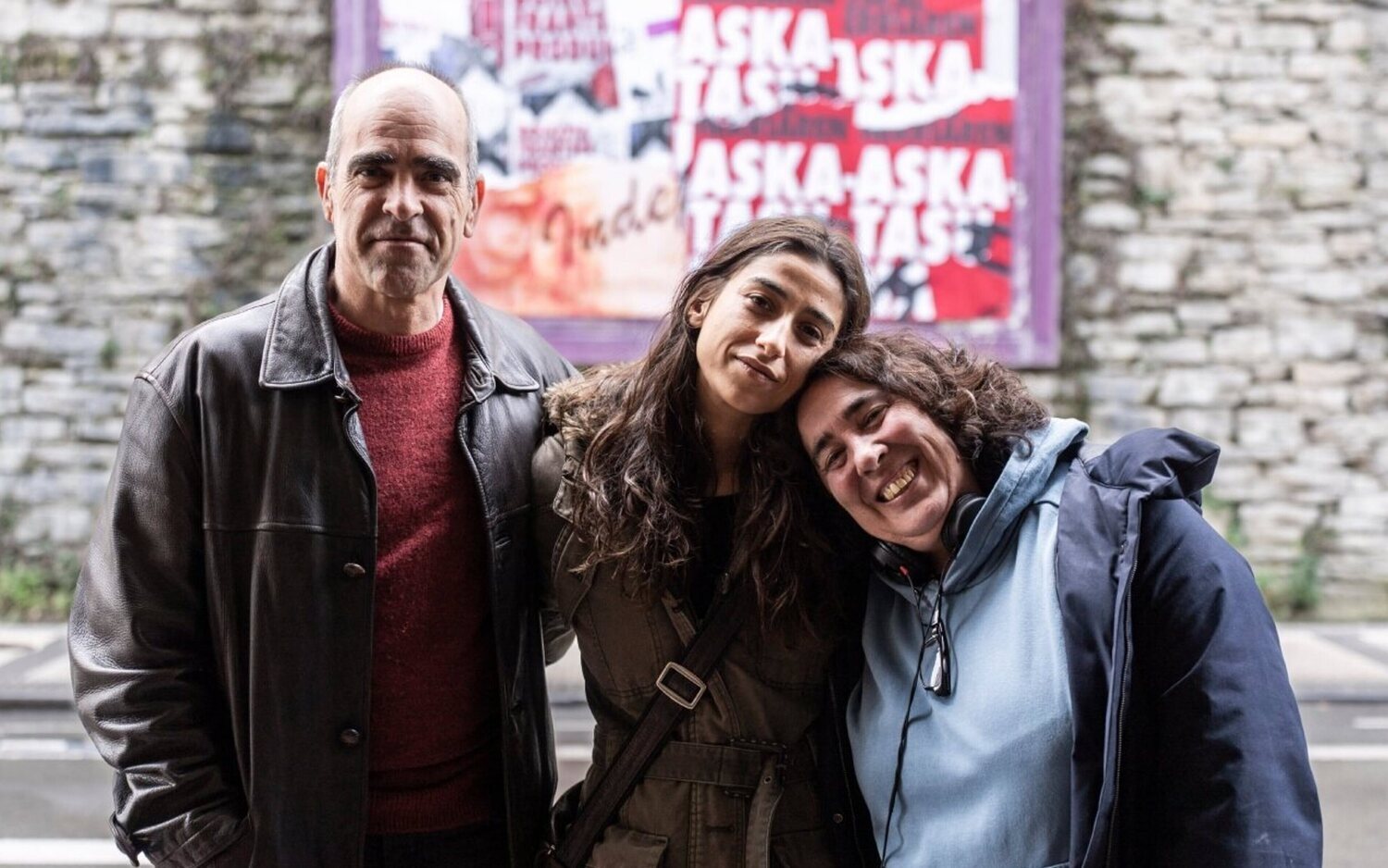- How can you mourn the landscape or a place?
- Arce's young man, in love with Bourbon anthropology, has a thousand questions. One of them related to the Itoiz reservoir: How can the people of Itoiz live next to the giant water raft that drowned seven villages and three natural reserves?
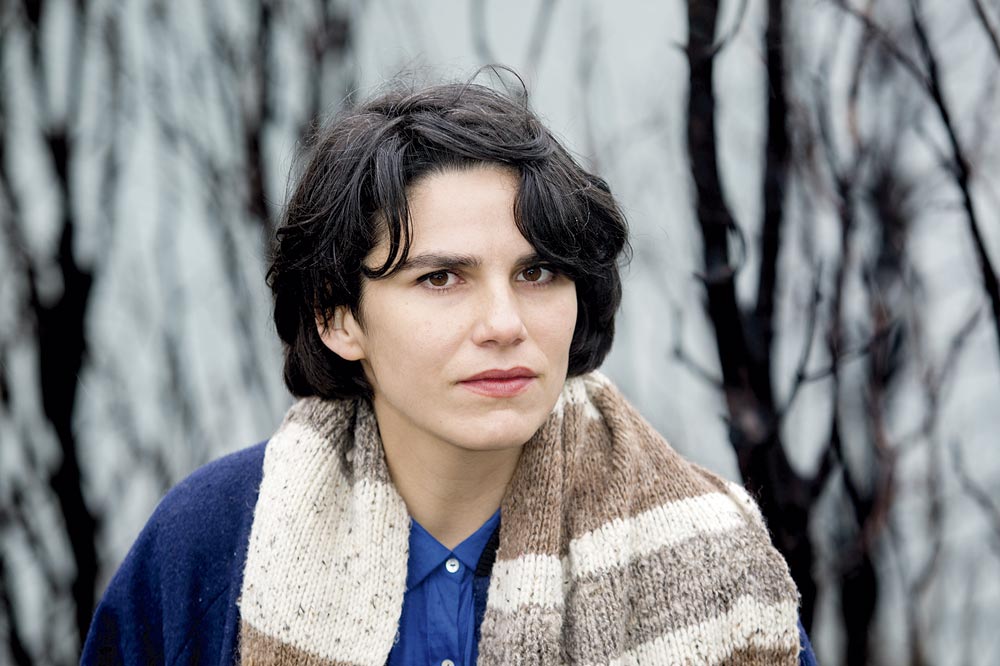
Ikus-entzunezko Komunikazioan lizentziaduna, EHUn. 2017an, Ikus-antropologia masterra egin zuen Manchesterreko Unibertsitatean eta han Yours Truly zuzendu zuen C. Murray eta C. Hoskins-ekin. 592 metroz goiti dokumentala da master bukaerako lana. 2018an, Visions du Réel jaialdian (Nyon, Suitza) estreinatu ondoren, Donostiako Zinemaldiko Zabaltegi-Tabakalera sailean hartu zuen parte. Zinemagile nafarraren lana Kimuak 2018 sortarako hautatua izan zen. Orain Itoizko urtegiarekin lotutako bigarren lana ari da prestatzen: Urpean lurra.
In film 592 from 592 he highlighted the affective link between farmers and animals.
Yes, but not all farmers feel that way. They are relationships of love and use, anyway: you give milk to the calf to eat it. The subject is very complex.
What relationship do you have with animals?
My father was a farmer, and I feel like I'm recovering this relationship in recent times. I have a point of admiration and respect for animals of other species. I often have the need to think about how we can coexist in this world. For example, with destructive infrastructures like Itoitz, it is clear how human beings believe that natural resources are for our exclusive use.
Are you a vegetarian? Or is it vegan?
I'm a vegetarian. I really like meat, but I made this selection a year and a half ago.
"I feel a point of admiration and respect for animals of other species. I often have the need to think about how we can coexist in this world."
Is there a debate in society about the relationships between animals, land and people?
Yes. Anti-specialist movements, eco-feminists, ecologists, etc. propose debates. I feel the people around me, worried and changing things in my day to day. At the same time, I see that there is an important current, which has been called “nature” and questions it. Nature is not something that is out there, that has nothing to do with culture. We're all part of something.
You were born and raised in the community village of Lakabe. What was your childhood like?
Very beautiful. I had a lot of freedom in the village to walk with the animals and with all the people. Adolescence, on the other hand, was not so pretty. I felt divided between two worlds. I held up my friends and wanted to be from there. He blamed the people for not being “normal.” At that age you want to be like everybody else and buy the Adidas tracksuit… Now, after years, I have an admiration for communities like Lakabe. They're points of resistance. They give me hope.
Would you come to live in such a place?
Living in Lakabe may not, but in a community like this is one of my dreams. I would like to live in a people, but not in a normal people, but in a people with a common project. Maybe it's related to an art project. For example, in a small town that has a film festival or something. In Lakabe, they always say they created a people to build a new world, because they wanted to stop fighting with the world that was there. They continue to struggle with the construction of a new world. It's a very positive model.
What are the advantages of such Community initiatives?
In the projects in which I have been, for example, in the collective of artists Jazar from Pamplona, I have seen that the strength you feel there has nothing to do with walking alone on your own. There's a collective force that pushes you forward. It's very powerful. Feeling part of something is a nice feeling.
In Yours truly, dead animals also appear.
Yes, dissected. I did it with two colleagues in Manchester, Christopher Murray and Charlotte Hoskins. We went to see an exposition of species of missing animals. There were the animals that we've never seen alive, the dodo, the Tasmanian tiger, some birds -- they told us that only 5 percent of those in that room had and the rest were in a warehouse. We asked for permission to visit her and there we recorded the images for this film. It was terrible, we knew that all the animals that looked at us had lived.
We found very interesting letters, sent out by the Manchester Museum and the taxi drivers and explorers. These letters reflect the commercial relationships that took place in the formation of their collection of animals. We realized that those pieces were uncomfortable. In fact, in the 1960s, the most exotic pieces brought from the outside were burned in several museums in order to destroy, apparently, the colonial past.
When you completed the Master's Degree work, you took as its axis the new situation that the Itoiz reservoir has brought to your place of origin.
I think the photo a friend made was the origin of the idea. In the image you see the water at the bottom and up the white tree forest. The trees are kept upright, but they are dead. In most cases they are submerged, but when the level of the Itoiz reservoir falls, they are exposed, discoloured. It was both beautiful and painful and I was very attracted to it.
I recalled that three years ago members of the Solidarity Group with Itoiz told me that they had pictures and videos of the time of the fight against the swamp. I wanted to see those images, because they're also part of my story. The project arose from the desire to understand that moment from the present.

What is 592?
The 592 is the limit that was imposed in the valley between life and death. The ranger of the film told me: the one above was saved and everything below was submerged. It is terrible the influence that a line drawn on a paper has had on all the stones, towns, people, plants and living beings that were there.
How many villages were destroyed?
Seven peoples and three natural reserves.
Have your childhood been submerged?
They've flooded many places in my childhood, yes. To others their people and their whole lives. My people stayed above 592 meters, but not many of the places I met when I was young: The Irati River, the road, the suspension bridge… is hard.
What's the main feeling of the people there?
A lot of people thought we'd win the battle, but not. It generates despair, but it's been 15 years since then. That's why I've made my approach from the present. I didn't want to do a review, because there are other jobs that do it. It's my interest. And now what? How can we live here and with this from now on?
Is it like living with an enemy?
Yes. Faced with this, each person has developed his/her own strategies. Some prefer not to see what happened and no longer approach the area. Others are in the process of acceptance and are gradually approaching. It is a complex issue. How can you mourn the landscape or a place? How do we make collective grief?
How has the film been taken by the public?
The reception of the film has been very nice. It premiered in Switzerland and there the reception was colder than in Euskal Herria. In Donostia-San Sebastian it was very nice, and in the town of Nagore it was also very exciting and very interesting. There was a little debate after watching the movie, and it was the first time that many shared their sensations. Some people came to thank me, confessing that they still can't talk about it at home.
The film allowed people to meet and discuss. A space was created to share experiences, and I think that's one of the great strengths of film. It was a wide-ranging struggle and now there is silence, and people thanked for reviving the debate. I think it is very important to acknowledge the peoples of Arce and Lónguida and to give future generations the opportunity to know their history. Cinema, by its own language, can be a powerful tool for this.
"In these years, speaking to people, I've realized that in night dreams, flooded places often appear. Today, dreams are the only way to reach these places."
What have you learned from this work?
Before I made the film, I did a lot of interviews, and then I realized that animals have been the intermediaries in this process for many. I worked mostly with a forest ranger and a farmer. They both approach the swamp because of its relationship with the animals. The farmer told me that he had realized that the cows drank water from the swamp and that the swamp also has benefits, because there is often little water in the village. Some have started to see a positive side of the reservoir, and that's where the change begins.
Attention to humans and other species in the reservoir has influenced me, especially when looking ahead to what concerns me. The truth is, getting close to the reservoir isn't easy, you don't see it everywhere, but there it is.
Don't see it, but feel it. Are the people of Aoiz and the surrounding area afraid of that?
I think people, in general, are quiet or a little forgotten. A friend told me he remembered the swamp only on storm days. But the truth is, I don't know, I've limited my work to the upper valleys. The experience is entirely different, that of the peoples who have remained above the dam of the dam and that of those below the dam.
Is the documentary you're doing right now in the water related?
Yes. It will be the second part of a diptych. It's a very different job. The first is very observable. He was following them in his diary. This time it's not. I am using archival images of the Itoiz Solidarity Groups. In addition, there are two main elements: the current landscape and dreams. In these years, speaking to people, I've realized that in night dreams, you see lots of times flooded places. Today, dreams are the only way to reach these places.
What would you like to talk about in the future?
My wish is to continue research into the relationships between human beings, territory and animals. There's the desire to create my own images.
It starts at age 7 and...
Have you always been drawn to the charm of the images?
Yes, it is. I like audiovisuals from a young age. When I was 7 years old, my father gave me a camera. I was always taking pictures of those closest to me. On the other hand, I had the ability to draw, so when I got to college, I didn't know Fine Arts or Audiovisual Communication. I think, in part, fear led me to choose the second. The Fine Arts career was a big challenge to do something about art or creativity, and at the time I didn't feel able to do it. Instead, I saw that the other option, that of Audiovisuals, did not force me to be an artist, that is, that I could live in this profession and carry out my projects at the same time. This is the reading I do now and I am happy with the path I have made.
Then you went to Cuba. What are you looking for?
I went to study Art Direction for Film. I was clear that I wanted to make films, but I think I didn't dare to immerse myself fully in it, and that's why I was developing approaches to film. Instead of studying film direction, I chose art direction, but I quickly realized it wasn't what I wanted. The forms of production to teach made me angry. One day, for example, a Hollywood director came and told us how an entire village was once made to roll a film and then destroy it. In addition, the film was very bad. I felt more comfortable with the processes and forms of documentary production.
On the return I worked with the company Labrit Multimedia from Pamplona and worked freelance. A few years later, I went to Manchester to study Visual Anthropology.
Why Visual Anthropology?
I wondered where I wanted to talk. I had technical knowledge, but I lacked a position in the world and it seemed to me that Anthropology could offer me tools for it.
It is the most powerful tool of visual anthropology that analyzes its approach through the use of a sensory way, compared to classical anthropology. Knowledge gives them differently and the viewer receives them differently. A friend says that in film it is very difficult to talk about large abstract concepts, which forces you to look for very concrete strategies to bring the viewer to those concepts. I agree. How to express freedom or pain in film?
What do you want to work with?
The relationship of human beings with other species, the landscape -- in concrete places. In anthropology, there's now a current of thought, it's called multi-specific ethnography, which I find very interesting. Many people study how humans create relationships with their environment and with other species, trying to get away from anthropocentric thinking. In Manchester, I had the opportunity to teach a lesson about the relationships between humans and animals, and that opened up a world for me.
No other land dokumentalaren zuzendari Hamdan Ballal kolono sionistek jipoitu zuten astelehenean bere herrian, beste hainbat palestinarrekin batera, eta Israelgo militarrek eraman zuten atxilo ondoren. Astarte goizean askatu dute.
Donostiako Tabakaleran, beste urte batez, hitza eta irudia elkar nahasi eta lotu dituzte Zinea eta literatura jardunaldietan. Aurten, Chantal Akerman zinegile belgikarraren obra izan dute aztergai; haren film bana hautatu eta aztertu dute Itxaro Bordak, Karmele Jaiok eta Danele... [+]
35 film aurkeztu dira lehiaketara eta zortzi aukeratu dituzte ikusgai egoteko Euskal Herriko 51 udalerritan. Euskarazko lanak egiten dituzten sortzaileak eta haiek ekoitzitako film laburrak ezagutaraztea da helburua. Taupa mugimenduak antolatzen du ekimena.
Pantailak Euskarazek eta Hizkuntz Eskubideen Behatokiak aurkeztu dituzte datu "kezkagarriak". Euskaraz eskaini diren estreinaldi kopurua ez dela %1,6ra iritsi ondorioztatu dute. Erakunde publikoei eskatu diete "herritar guztien hizkuntza eskubideak" zinemetan ere... [+]
Geroz eta ekoizpen gehiagok baliatzen dituzte teknologia berriak, izan plano orokor eta jendetsuak figurante bidez egitea aurrezteko, izan efektu bereziak are azkarrago egiteko. Azken urtean, dena den, Euskal Herriko zine-aretoak gehien bete dituztenetako bi pelikulek adimen... [+]
Otsailaren 24tik eta martxoaren 1era bitartean, astebetez 60 lan proiektatuko dituzte Punto de Vista zinema dokumentalaren jaialdian. Hamar film luze eta zazpi labur lehiatuko dira Sail Ofizialean; tartean mundu mailako lau estreinaldi eta Maddi Barber eta Marina Lameiro... [+]
A conference for architects has just been held in Madrid to discuss the crisis of the professional architect. They have distinguished the traditional and contemporary way of being an architect. What is traditional? From the epic architect who appears in The Brutalist, where... [+]
Itoiz, udako sesioak filma estreinatu dute zinema aretoetan. Juan Carlos Perez taldekidearen hitz eta doinuak biltzen ditu Larraitz Zuazo, Zuri Goikoetxea eta Ainhoa Andrakaren filmak. Haiekin mintzatu gara Metropoli Foralean.









